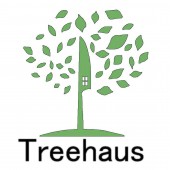Treehaus NYC High-end Eatery by Chief designer Ji Rook Kim /UnSPACE |
Home > Winners > #35828 |
 |
|
||||
| DESIGN DETAILS | |||||
| DESIGN NAME: Treehaus NYC PRIMARY FUNCTION: High-end Eatery INSPIRATION: Urban foraging in a sculptural landscape UNIQUE PROPERTIES / PROJECT DESCRIPTION: TreeHaus is a high-end eatery where food, art, and found objects coexist to create an urban foraging site. From the exterior, there is no visible sign of food, only architectural and sculptural pieces scattered throughout the space. By searching and engaging with these elements, guests can discover their food. OPERATION / FLOW / INTERACTION: The spatial organization is mainly formed by the relationships between different food types and sculptural objects. The sculptural objects are massive in size: they guide people through the open space to find different types of food, encouraging urban-foraging. We wanted to instigate the instinctive approach of finding food by concealing them visually from the exterior of the building with sculptural objects. PROJECT DURATION AND LOCATION: Treehaus. 830 3rd Avenue. NYC. NY. 10022 FITS BEST INTO CATEGORY: Interior Space and Exhibition Design |
PRODUCTION / REALIZATION TECHNOLOGY: TreeHaus features three main design components that envelop food and other miscellaneous eatery functions. The first element is comprised of 75 pieces of 20 feet high cedar wood planks slightly angled away from the main entrance to hide the register from the exterior. The second element is a sculptural white rectangular vessel. The vessel is comprised of walls facing the entry and storefront, hiding the variety of foods stored inside. The third element is a sub element of the vertical cedar piece - a series of angled wood planks installed on the mezzanine. This element also acts as a buffer to hide an eating area located on the upper floor. All three elements were developed with materials that were kept as raw as possible. In order to keep to the theme of an urban foraging site, we minimized treatment and cuts of the materials to allow natural aging. SPECIFICATIONS / TECHNICAL PROPERTIES: Net square-footage of: 10,041 sq.ft TAGS: treehaus, eatery, restaurant, interior design, food, new york, unspace, architecture, interior architecture, urban foraging, RESEARCH ABSTRACT: The research was conducted on the idea of urban-foraging. Typically in urban cities, the working class foragers are given an hour of lunch-time to explore and stumble upon a restaurant. Our objective was to provide an intuitive experience of food gathering. Through studies and gathered information from our client’s method of business, we reduced the steps of the food buying process by minimizing their menu options and organizing these options not with a menu, but with architectural elements. With this simplified process, the client was able to focus more on the quality of food rather than the diversity; thus giving urban foragers a more rewarding process of discovering food as well as a more efficient method of getting food. CHALLENGE: The biggest challenge during the design process was to convince the client to reduce their number of options in their menu. Since the client had been doing this type of business for more than 15 years, it was difficult to convince the client to try a new approach. After thorough research and careful consideration, the client agreed to reduce the number of selections. With this revised menu, the consumer satisfaction as well as the food quality increased dramatically, exceeding the client’s expectations. As the reduced options lessened the time involved with decision making, it also increased the speed of food production. The one hour lunch rush was now manageable, and as a result, the sales value of the venue increased. ADDED DATE: 2014-07-23 11:18:46 TEAM MEMBERS (3) : Chief Designer;Ji Rook Kim, Wood installation;Sookjin Jo and Wood Bench;Ryosuke Sakai IMAGE CREDITS: Photo Credit to Christophe Randall |
||||
| Visit the following page to learn more: http://unspace.org/ | |||||
| AWARD DETAILS | |
 |
Treehaus Nyc High-end Eatery by Chief Designer Ji Rook Kim/Unspace is Winner in Interior Space and Exhibition Design Category, 2014 - 2015.· Read the interview with designer Chief designer Ji Rook Kim /UnSPACE for design Treehaus NYC here.· Press Members: Login or Register to request an exclusive interview with Chief designer Ji Rook Kim /UnSPACE . · Click here to register inorder to view the profile and other works by Chief designer Ji Rook Kim /UnSPACE . |
| SOCIAL |
| + Add to Likes / Favorites | Send to My Email | Comment | Testimonials | View Press-Release | Press Kit |
Did you like Chief Designer Ji Rook Kim/Unspace's Interior Design?
You will most likely enjoy other award winning interior design as well.
Click here to view more Award Winning Interior Design.








